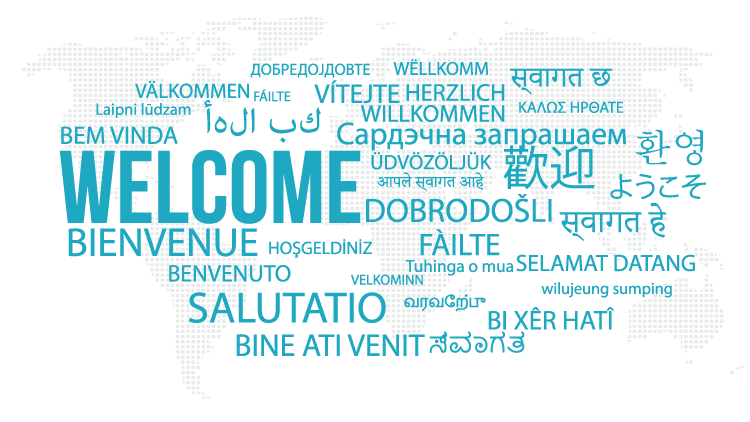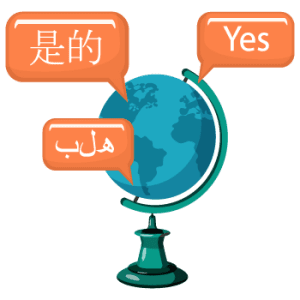The Importance of Translators Note

The translator’s notes are an essential part of your translation process and should not be ignored. They can be used to clarify confusing or vague details of the original work, explain unique cultural references in the source text, and even give you insight into what mistakes to look out for while you translate the rest of the document. Read on to learn more about the translator’s notes and why they deserve your attention during your translation process.
Overview of What a Translator’s Note Is
A translator’s note is a short section added to an otherwise complete work that clarifies some points about how or why it was translated. They’re different from translator biographies because they focus on specific aspects of translation rather than on who is doing it. Many translators include their notes when translating a text, but they can also be added by editors or publishers as needed.
These additional notes may discuss any number of things: what historical context affected specific translations, what changes were made in publishing for reasons other than original language-based ones, etc. In addition to being a helpful clarification tool for readers, translator’s notes are often used as promotional tools for professional translators themselves—they’re usually brief blurbs highlighting why they felt a particular book should be translated and published in the English language in addition to another foreign language.


How to Write an Effective Method Among Translator’s Notes
When working as a translator, you will be tasked with writing a translator’s notes for many reasons. Here are some guidelines to help you write an effective one. First, consider who might read your translation and what they might be looking for in a translator’s note.
Second, keep it short and sweet. Most people won’t have time or interest in reading through long paragraphs of the original texts that aren’t pertinent to their situation.
Keep it concise and easy to read; use bullet points when appropriate. And remember: less is more!
Why a Translator’s Note is Important
Sometimes, things are lost in translation. Here’s why you should always read a translator’s note! A translator’s note is important because it helps you know who translated the text and what they brought to it, which can be valuable if you don’t speak or read their source language fluently. For example, if your translator has an extensive background in philosophy or literary theory, they might have an insight into certain words that can help enhance your reading experience.
Additionally, a translator’s note will tell you whether or not there were any challenges during translation so you can avoid making similar mistakes when writing your documents. It may seem like a small thing at first glance. Still, as more companies begin to recognize how much value there is in having native speakers translate their content for them, translator-detailed notes or explanatory notes will become even more common—and thus even more critical.
With post-editing machine translation, the quality of the machine-produced translation often leaves the translator feeling the need to explain a whole range of points!


How to add translator’s notes
There are several methods for adding notes to a translation (for example, here are some translators’ choices). Using parenthesis directly in the text or prefixing a comment with the acronym ‘TN’ or ‘t/n’ are two popular techniques. Footnotes are another frequent way among translators, albeit this method may confuse the source text that already has footnotes. If you’re going to use the shortened technique, write down ‘Translator’s remark’ in full first so the reader understands what the abbreviation means. A must-read blog post for Every translator’s common questions.
Whatever way you use to alert readers to your notes, the most important thing is to be consistent in your application so that the reader receives a clear signal. If your remarks are solely meant for your client to see and not to be included in the final text of the target translation, then using the comment feature of various word processing software is suitable and may be more convenient. This will notify the customer of numerous topics that they should discuss with you or think about on their own before posting the translation.
How frequently are translator’s notes appropriate to use?
The use of notes and how often they should be used is a hot topic among translators. After all, supplying lengthy notes to clarify your choices will take time away from your audio translation time. Especially in literary translation, many of these decisions are related to questions of aesthetics and style.
This was addressed in depth on the Proz discussion site, where a translator was given the duty of providing comprehensive comments for each interpretative alternative she picked, as well as explaining why she chose that practice of translation norms. What made things much more complicated was the fact that she was transcribing an audio recording that was riddled with inconsistencies and repetitions.
The interpreter will, therefore, be less likely to use a literal translation in the heat of the speech. If asked to do extra work due to the translator’s comments, communicate with the client and address any challenges with proper names.
The translator may also make an educated guess and cultural studies as to what the missing text was and translate it, but they would have to include a note informing the customer of their assumptions.
The theory and practice of translation, Leiden: E.J. Brill. Suggests checking the ‘equivalence of effect.’ Translators writing prefaces could help build bridges between the theory and practice of translation and develop a more professional meta-language.
The earliest English translation of the Lotus Sutra, published in 1884, is outdated; thus, a new translation from a vital version is warranted. The investigation and elaboration of translators’ prefaces, as documents placed between abstract theory and the actual translation practice, should find a place higher up on both the scholars’ and the practitioners’ agendas.

The Importance of Translation Studies
Translation Studies is a field of study that deals with the theory, description, and application of translation. Because it examines direct translations both as an interlingual transfer and as intercultural communication, Translation Studies can also be described as an inter-discipline that touches on other diverse fields of knowledge, including comparative literature, cultural studies, gender studies, computer science, history, linguistics, philosophy, rhetoric, and semiotics.
The skills of translation are becoming ever more important and desirable. Today’s multicultural and multilingual society demands effective, efficient, and empathetic communication between languages and cultures. That’s important for various reasons, which we’ll now explore.
As communication and travel advance, geography becomes less and less of a barrier to doing business. Companies benefit from working overseas. They can take advantage of the lower cost of products and services in some countries, the professional and industrial expertise, and additional markets to trade in.
Descriptive translation studies – and beyond.
When they trade in countries with a different native language, they need high-quality direct translations to communicate effectively. If there’s a demand for translation, there are opportunities for translators. When there’s a demand for translators, there’s a demand for Translation Studies. They need to learn the skills to practice at a high level and perhaps even contribute to advancing the field even further.
Although English is currently the dominant language, emerging markets like China may increase demand for translation to and from their native language.
Therefore, in their turn, translation practitioners could make more ample use of the findings from various directions in the discipline of translation studies and thus provide more transparent and more objective meta-textual writings.
However, the Corpus of translator’s comments can provide a tremendous amount of context for a translated piece. They enable foreign translators to clarify their translation choices and discuss challenges, helping readers understand the delicate topics involved.
For example, in the foreword to Mirjam Nuenning and Sharon Dodua Otoo’s new German translation of Octavia Butler’s Kindred, which was published by w orten & meer in 2016, they articulate several complex questions that went into their considerations for how to translate what is arguably one of the most important works of fiction of the twentieth century.
Preliminary norms involve a receiving culture’s translation policy and the choice between direct translations from the source or intermediate languages.

Translation Tips
Translate with more than just a dictionary
Many people think that the work of an ideal translator is limited to a bilingual dictionary. Translating a few lines reveals that dictionaries lack essential terms, necessitating reliance on numerous resources for quality translation.
Educational programs that embrace and celebrate diverse cultural backgrounds contribute to fostering a more inclusive and enriched learning environment.
Check yourself
“Never stop there” – this phrase applies to translation more than you think. Check everything you wrote several times: reread the sentence first, then the paragraph, and then the entire text. Pay attention even to those words and combinations that seem simple and obvious. Do not trust anyone, especially the first available resource; try to find confirmation of your versions in several authoritative sources.
Video translation and post-editing machine translation have sustained translation agencies in recent years, with demand for both continuing to grow.
- Toury Gideon 1995. Descriptive translation studies – and beyond. Amsterdam : John Benjamins . [Crossref], [Google Scholar]
- InSociocultural aspects of translation and interpreting, Edited by: Shlesinger, M., Jettmarowa, Z.
Frequently Asked Questions
A Google Books search indicates that TN is the standard shorthand for “translator’s note.” You may use it in its entirety the first time so that the abbreviation is evident later.
It is a paraphrase, not a straight quotation when translating a text from one language to another. Thus, all you have to do to reference your translated work is add the author and date in the in-text citation.
Translator’s notes enhance the reading experience by providing additional context and explanations, allowing readers to grasp the full meaning and appreciate the cultural nuances of the original work
Translator’s notes should be clearly marked and formatted consistently, often appearing as footnotes, endnotes, or within brackets in the text, making them easily identifiable for readers.
While translator’s notes can momentarily interrupt the flow of the text, they ultimately enhance comprehension, so they should be used judiciously to balance clarity and readability.




